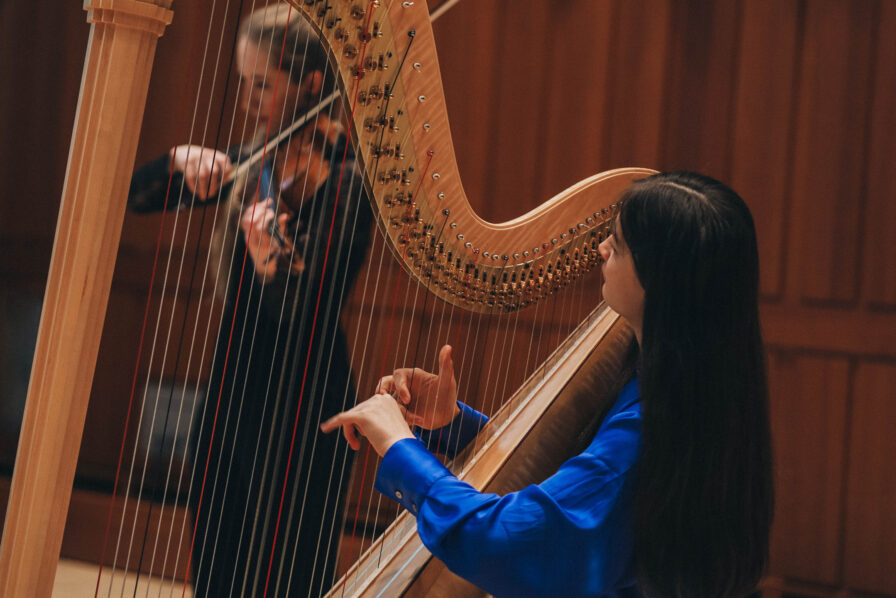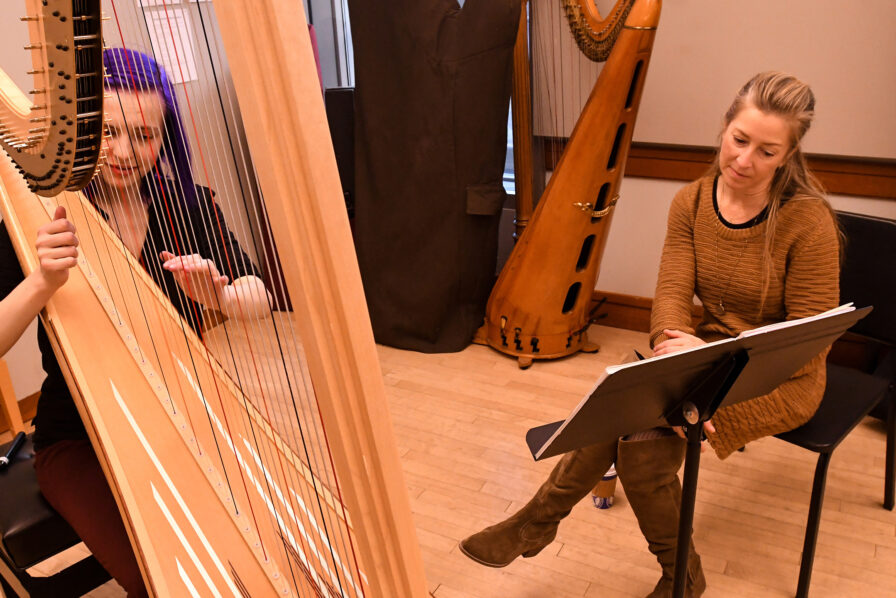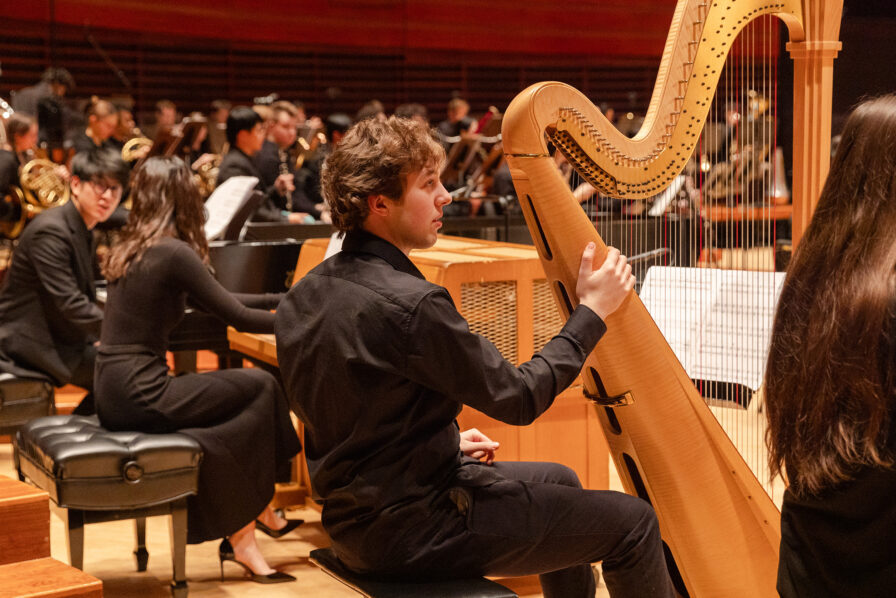Legacy of Harp

Curtis has shaped a century of virtuoso harp performers and pedagogues, linking innovation, orchestral excellence, and global influence through generations.
The legacy of harp at Curtis is inextricably tied to French harpist Carlos Salzedo, an original member of the faculty and one of the central figures in the history of the instrument.
The originator of one of two American schools of harp playing today, Salzedo was also an innovative composer who introduced new tonal effects and techniques that displayed the harp’s capabilities as a virtuoso instrument and were cataloged in his groundbreaking book Modern Study of the Harp (1921). Additionally, he designed his own model of harp featuring an expanded sounding board, enhancing projection and making it a preferred choice among orchestral harpists.
As a member of the Curtis faculty for nearly four decades, Salzedo taught some of the finest harpists of the time. Edna Phillips (’30) was the first woman to be offered a principal position in an orchestra when she was appointed principal harp of the Philadelphia Orchestra in 1930. Alice Chalifoux (’34), served as principal harpist of the Cleveland Orchestra from 1931–74 and was Salzedo’s designated successor as head of the famed Salzedo Harp Colony, which he founded in 1929.
Another Salzedo protégé, Marilyn Costello (’49), was invited by Eugene Ormandy to join the Philadelphia Orchestra during her second year as a student. Less than a year later, she was appointed principal harpist, a position she held for 46 years until her retirement in 1992.
Following Salzedo’s death in 1961, Costello was appointed to the Curtis faculty, where she served for 37 years until her death in 1998 (in a remarkable coincidence, the same number of years Salzedo served). During that time, she taught harpists who eventually took positions in many of the world’s great orchestras, including Valerie Muzzolini (’99), principal harp of the Seattle Symphony since 1999, and Marie-Pierre Langlamet (’88), deputy principal harpist of the Metropolitan Opera Orchestra from 1988 until 1993, when she was appointed principal harpist of the Berlin Philharmonic.
The Salzedo legacy at Curtis continued with the appointment of Judy Loman (’56) in 1998. Recognized as one of the world’s foremost harp virtuosos, Loman was principal harp for the Toronto Symphony Orchestra from 1960–2002, and performed as a soloist throughout North America, Europe, and Japan. After her retirement from Curtis in 2014, she remained an important presence at the school as a visiting guest artist.
Today, the harp department is headed by Elizabeth Hainen. Principal harp of the Philadelphia Orchestra for over 25 years, Hainen joined the Curtis faculty in 2005. Her appointment continues the tradition of excellence in harp pedagogy at Curtis while reestablishing the historic ties between the department and the Philadelphia Orchestra that have now existed for a century. Hainen also continues Curtis’ strong tradition of commissioning new works, notably giving the U.S., China, European, and Australian premieres of Tan Dun’s Nu Shu: Secret Songs of Women (2013).
Faculty Timeline
-

Carlos Salzedo
Harp — 1924-61 -

Marilyn Costello
Harp — 1961-98 -

Judy Loman
Harp — 1998-14 -

Elizabeth Hainen
Harp — 2005-Present -

Noël Wan
Harp — 2025-Present
- 1926
- First Harp Alumni
Florence M. Shaffner
- 3
- Harp Studio
There are up to 3 harp students studying at Curtis in any given year.
Legacy of Curtis
Leading to its centennial year, Curtis began a multi-year project celebrating each of the school’s major areas of study.





